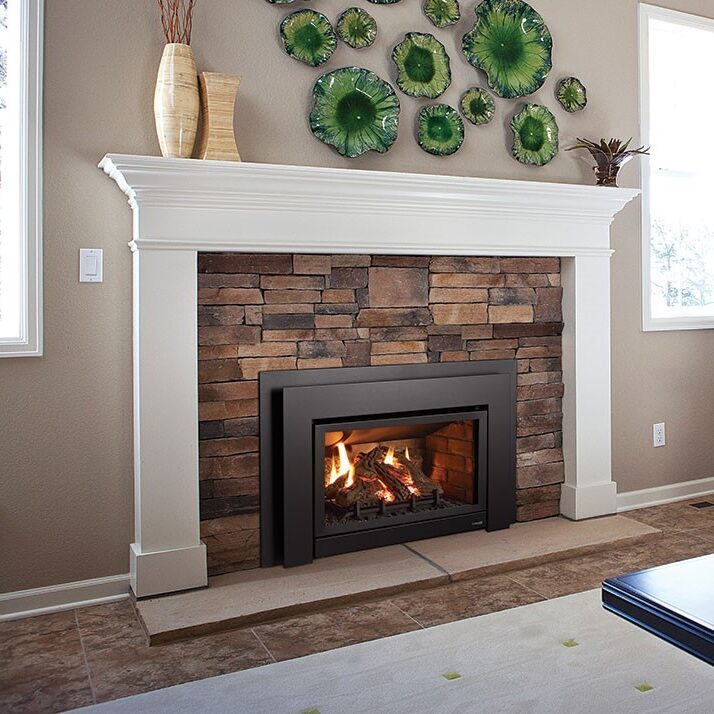Sitting around a warm, inviting fire at the end of a long day whether with family or in solitude is a picture-perfect setting. For many people, this is the ultimate way to relax and unwind. These individuals probably also have an extreme preference for the question we are about to pose today: a gas vs wood fireplace? Let’s break down the basics separating the two options and discuss the positive elements of each style and their drawbacks.
 Wood-burning
Wood-burningWood-burning fireplaces are timeless. For centuries, they’ve been the gathering place of the home. As a source of heat and food preparation in years gone by, they were initially as vital to survival as technology is to us today.
This style of fireplace is also a constant in movies as its image lends perfectly to a picture-perfect family gathering together. There’s a reason wood-burning fireplaces are so popular: they invoke memories and reminders of the past for many. But the feelings they bring aren’t the only thing to consider when selecting this option.
Let’s start with the good stuff. You cannot beat the ambiance a traditional fireplace provides. The gentle crackling of wood as it burns, the flames dancing in front of your eyes, the smell of the wood as it burns, and the heat radiating outward is a full-body sensory experience. Paired with the emotions of a family gathered together, an event, or even just the quiet stillness of being alone, it’s easy to see why this is a popular option. Wood-burning fireplaces tend to be cheaper to install and are also typically less expensive to operate than gas models.
Choosing this option does have some negatives. First, there is much more effort involved in gathering your materials. Wood must be chopped or purchased. This wood must be dry and seasoned, not fresh as damp logs can lead to dangerous situations in your fireplace and chimney. Additionally, once you are done burning your fire, the firebox will need cleaning. Once the area is completely cool, the ash and leftover wood need to be removed to prevent creosote build-up and other dangers.
 Gas
GasGas fireplaces are modern, sleek, and versatile. There are endless options when deciding how to incorporate one into your space. Gas fireplaces are a great way to enhance the aesthetics of your space as you can find one for just about any design style out there. Gas fireplaces are efficient and easy to use. Now, let’s discuss specific pros and cons.
Once again, the good things first. Gas is easy. Once everything is set up, you simply push a button and voila, you have a fire. Gas fireplaces are also much easier to clean as there is no ash leftover at the end of a burn or smoke build-up.
An occasional, basic dusting and yearly inspection to ensure systems are operating properly are all it takes for your gas fireplace to run smoothly. Because you are using natural gas to power your fireplace, there is more cost involved here than with wood-burning fireplaces. You can’t just go out to your backyard and grab a few logs from the pile. Initial installation of a gas model tends to cost more as well since lines will need to be run or connected to your gas source.
Both styles of a fireplace will require general upkeep and a yearly inspection to ensure safety. In addition, both options are generally safe to operate with supervision, though your wood fireplace will require a closer eye than a gas one. And finally, environmental impact. Gas emits fewer pollutants but is not a renewable resource while wood emits more CO2 but is renewable.
Are you wondering which style is right for your home? We’re happy to help. Contact the FlameMaster team by calling 719-661-3277 or by sending us a message through our website here.